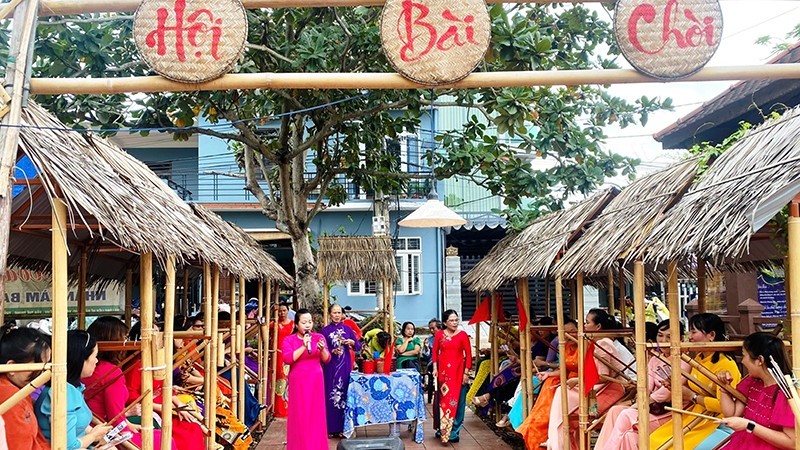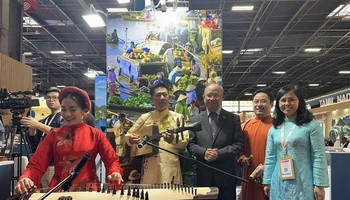The provincial authorities approved a project on preserving and upholding the value of Bai Choi art heritage during 2019-2023.
The project focuses on educating the local younger generation on the value of Bai Choi folk art.
Since then, Thua Thien Hue Province has become a pioneer in bringing Bai Choi heritage into schools.
The Provincial Department of Culture and Sports has coordinated with districts and towns throughout the province to organise training courses on singing and performing skills for hundreds of music teachers, then the teachers incorporate Bai Choi in their music curriculum and extracurricular programmes.
Nguyen Thi Loi from the Cultural Heritage Management Office under the provincial Department of Culture and Sports reported that from 2019 to 2023, the Department organised seven training classes on Bai Choi singing throughout the province, including two classes for 48 students in Quang Dien and Nam Dong districts, and five others for 75 music teachers, and more than 200 students in other districts and towns in the province.
According to Loi, bringing the Bai Choi heritage into schools is not simply instructing students to practice singing Bai Choi, but also helping them understand the hidden meaning in the songs’ lyrics.
It also helps children appreciate and love the artistic heritage of Bai Choi, and nurture a passion for Bai Choi in particular and folk music in general, thereby increasing their responsibility in protecting and promoting the heritage of traditional culture.
In addition to having Bai Choi introduced to schoolchildren, the local culture department has also supported the establishment of Bai Choi singing clubs. As a result, many clubs have been found, attracting the attention and participation of local arts enthusiasts.
The clubs’ members have brought Bai Choi melodies to the stage of many art festivals and competitions inside and outside the province.
By joining Bai Choi singing clubs, many young talents have been discovered and they then receive proper training to become key factors in artistic activities related to the conservation and communication of Bai Choi.
 |
A Bai Choi performance by students of Thuy Phuong Secondary School in Huong Thuy Town, Thua Thien Hue Province (Photo: laodong.vn) |
According to Phan Thanh Hai, Director of the Thua Thien Hue Provincial Department of Culture and Sports, to further promote the heritage value of Bai Choi, the Department has coordinated with the provincial Radio and Television to carry out programmes on broadcasting the art form to TV and radio audience.
The programmes have gained practical results, enhancing the responsibility and raising public awareness of the importance of preserving and promoting cultural values of Bai Choi art in Thua Thien Hue Province.
Bai Choi is a diverse art combining music, poetry, acting, painting and literature. The folk singing genre is popular in the central provinces of Quang Binh, Quang Tri, Thua Thien-Hue, Quang Nam, Quang Ngai, Binh Dinh, Phu Yen and Khanh Hoa, and Da Nang City.
Bai Choi is often seen at local spring festivals, particularly the Lunar New Year Festival, and resembles a game, using playing cards and village huts.
The stage for Bai choi performances encompasses nine cottages, each containing five or six ‘players’. One of the cottages, the central house, contains a troupe of musicians and instruments. A deck of playing cards is split in half, with one stack distributed amongst the players, and the other placed in the central house. The cards are stuck onto bamboo poles and erected outside the cottages.
The game singer delivers a flag to each cottage, all the while singing Bai choi, and then draws a card from the central house. Whoever holds the card closest in value to the game singer’s card wins.
The Bai Choi songs are about festivals, daily life and work, and are accompanied by musical instruments.
















